Climate Point: What will a map of America look like in 2050?
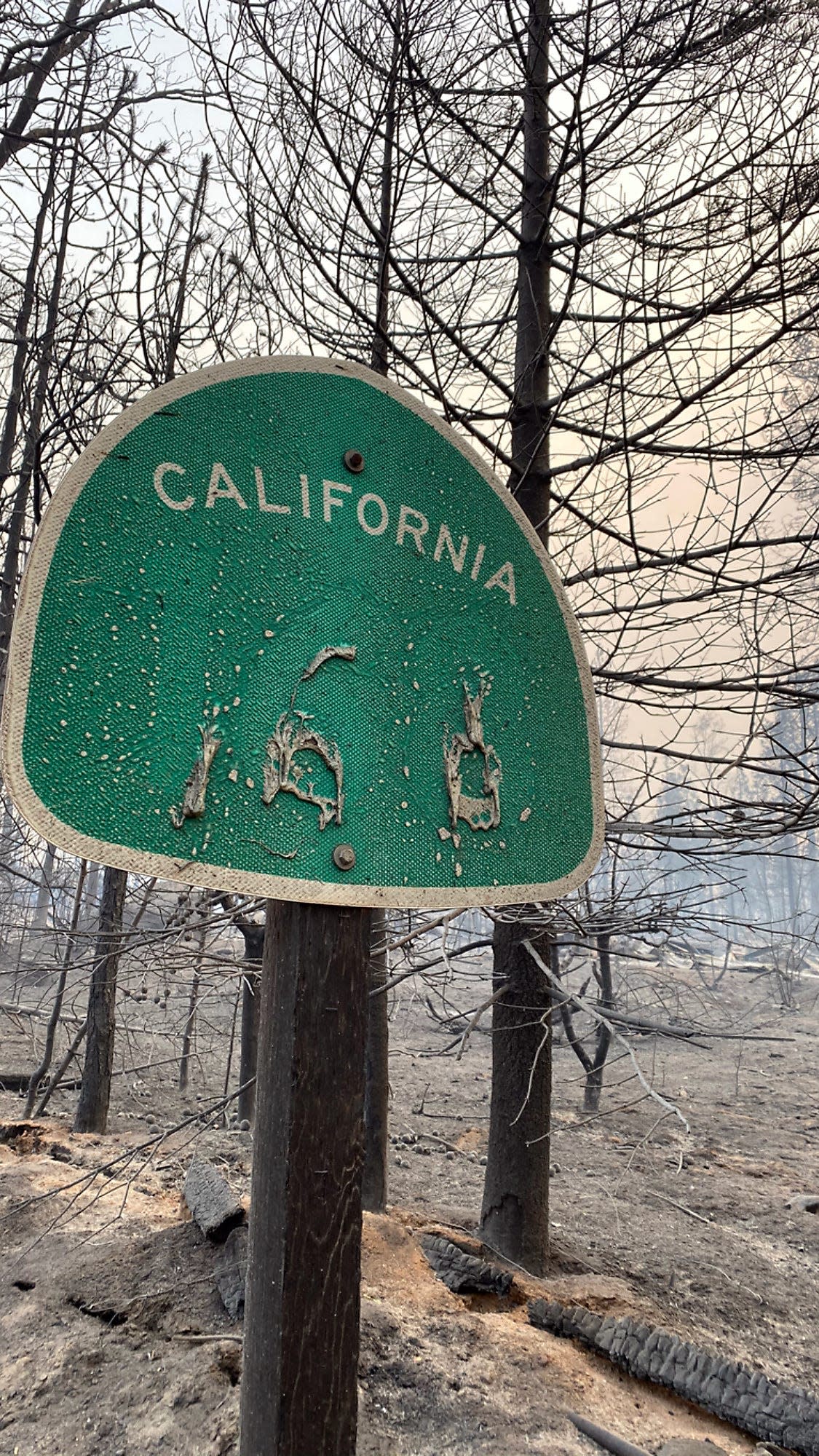
Welcome to Climate Point, your weekly guide to climate, energy and environment news from around the Golden State and the country. In Palm Springs, Calif., I’m Mark Olalde.
And welcome to 2020, the year of a pandemic, climate change, racial tensions and, for that weird moment, murder hornets. "COVID-19 may only be the beginning of global pandemics — a future scenario in which climate change may also play a role," USA Today writes. The future relationship between viral diseases and the weather is full of ambiguity, but public health will shift, that much we know.
While we're delving into scary, forward-looking climate pieces, here's one more I highly suggest you read. ProPublica and The New York Times Magazine built a nuanced data analysis showing how rising temperatures, surging sea levels and shifting weather patterns will redraw the map of the U.S. There's a "niche" of climatic conditions where humans thrive, and that is moving away from the equator and up. Use their tools to check out your own slice of America. What's going to happen to it in a few decades?
Here's some other important reporting:
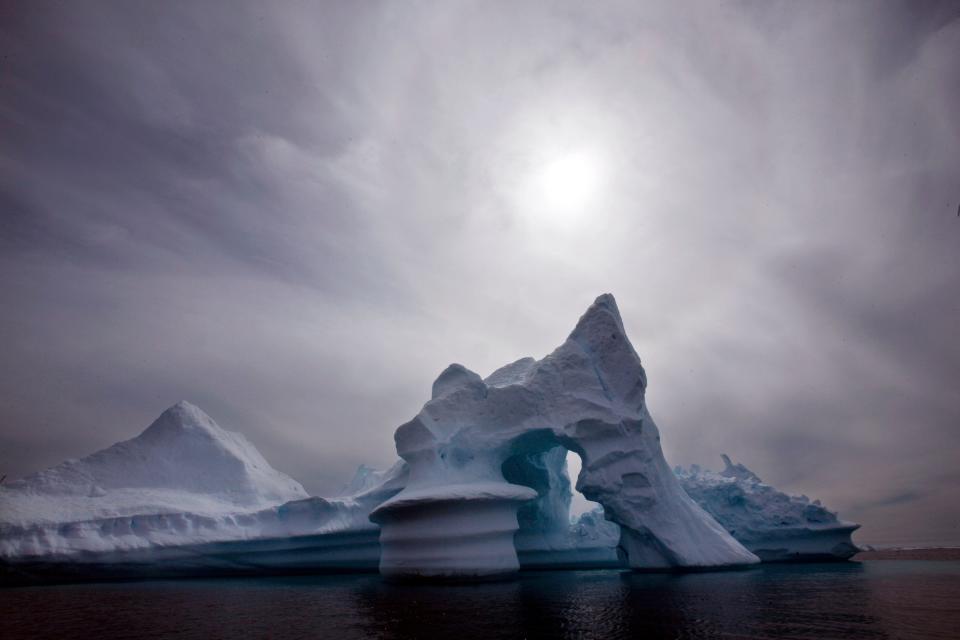
MUST-READ STORIES
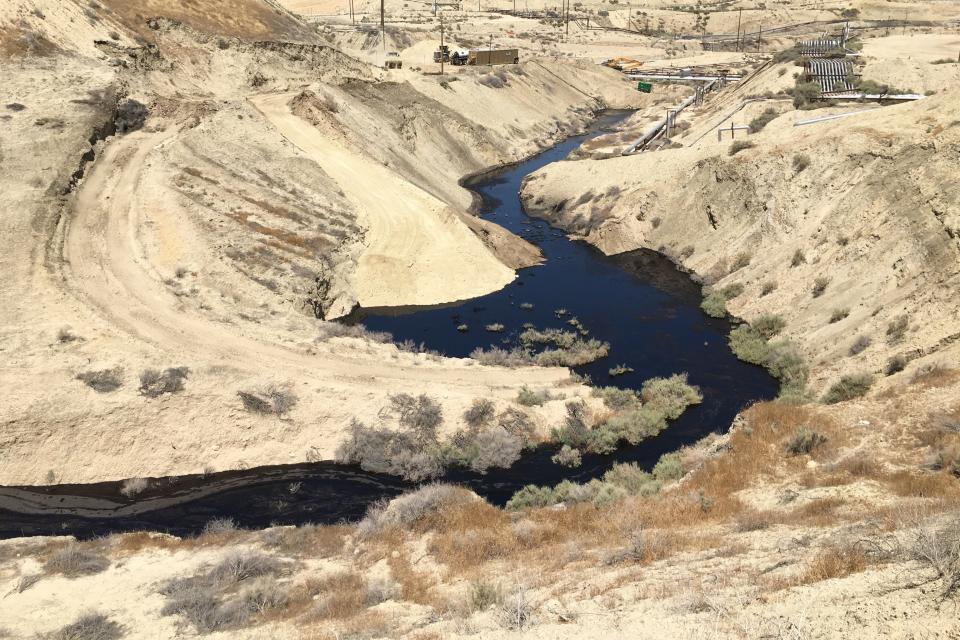
Profiting from spills. Dozens of little-known California oil spills have earned companies millions of dollars, an investigation by Janet Wilson of The Desert Sun and Lylla Younes of ProPublica has found. In 2019, California banned inland oil spills known as "surface expressions," but there are no explicit deadlines for stopping them and restoring the sites. When the spills break out, nothing stops producers from turning them into moneymakers — companies can corral the spills with dirt berms, netting, pipes or drains, vacuum out the crude, refine it and sell it. One Chevron spill has been running since 2003, and is bigger than the 1989 Exxon Valdez tanker disaster. In the last three years alone, the crude collected from it has generated an estimated $11.6 million, according to an analysis of data provided by the state.
Peak oil. It's a wonky phrase, but it signals a paradigm shift humanity: peak oil. Boiled down, it means the point at which the world is extracting and consuming the most oil that it ever will. After that, it's a downward slope into a new, hopefully greener, energy portfolio. BP, one of the world's oil supermajors, became the first such company to predict peak oil is upon us. Bloomberg reports that growth in demand for black gold either has already hit its zenith or nearly there.
What's at stake. InsideClimate News is in the midst of a series that analyzes how key Senate races around the country will impact the environment. Recently, reporter James Bruggers dug into the track record of the GOP's longest-serving Senate majority leader, Mitch McConnell of Kentucky. While his opponent is a centrist Democrat who hasn't endorsed the Green New Deal, McConnell has been a powerful force in halting momentum on climate action and opposes steps like sticking with the Paris Agreement.
Why is California on fire? There aren't many scientific fields more contentious than fire research, and that's the case as California obliterates its record for most acres burned in a single year in recorded history. In the Sierra Nevada, there are easily more than 100 million trees killed by bark beetle infestations and drought, adding 2,000 tons of fuel per acre in some places. But is the cause of fires ranging through these mountains as simple as too many dead trees? Joshua Yeager of the Visalia Times-Delta and I dug into this question to sort fact from fiction and learn what's making California's fires so catastrophic. If a scientific discussion's too detailed, President Donald Trump also took on California wildfires this week, chiding state officials who tried to teach him about climate change. "Well, I don't think science knows, actually," Trump said.

POLITICAL CLIMATE
The rollbacks roll on. My hometown paper, the Chicago Tribune, is out with a new deep dive into how the Trump administration's war on environmental regulations has allowed a coal-fired power plant that dumps by far the most arsenic, lead and mercury into Lake Michigan to continue operating. "Buried in the fine print of the Republican administration’s new regulations is a stunning admission: Benefits for energy companies would come at the expense of more than 20 million Americans who drink water and eat fish from lakes and rivers polluted by coal plant discharges," the story says.
Putting climate deniers in charge. In another stunning, anti-science move, a longtime climate denier has been hired to an important post at the National Oceanic and Atmospheric Administration, NPR reports.
Fighting in the Last Frontier. Up in Alaska, the Anchorage Daily News is out with an analysis of Ballot Measure 1, which will appear on the November ballot. It's an initiative targeting the highly subsidized oil industry and could significantly raise taxes on several supermajors operating in the state as well as force them to crack open their books, at least in part. The oil industry has unsurprisingly come out in opposition, claiming the measure would hurt the economy.
CLIMATE CHANGE MARCHES ON
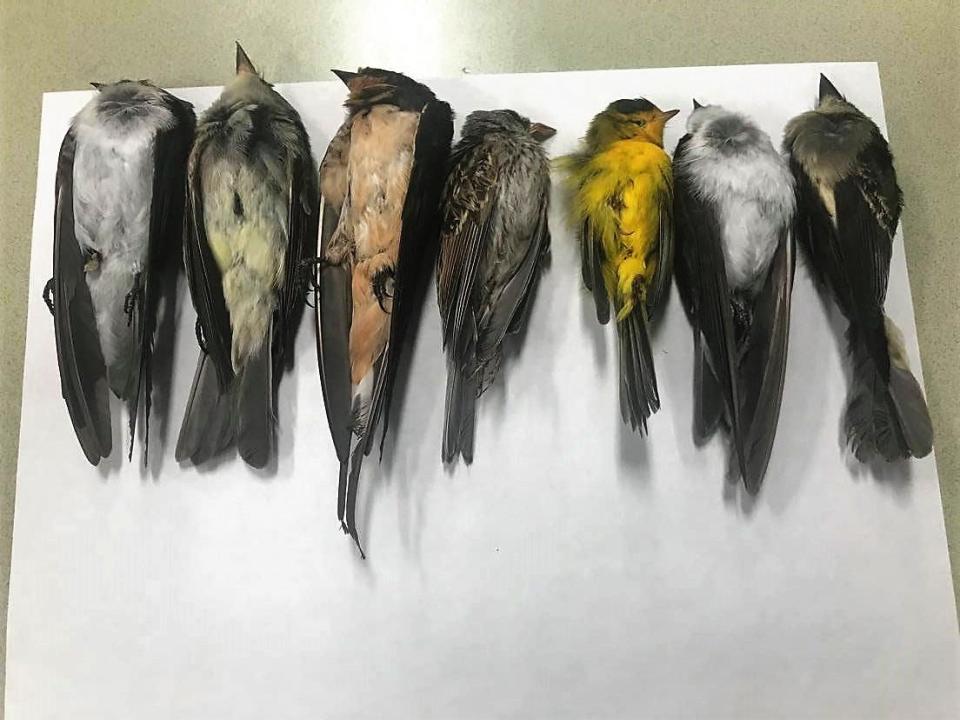
Death from the skies. Climate change has myriad, sometimes surprising, impacts on the natural environment. The Las Cruces Sun-News reports that birds across New Mexico are mysteriously dying, and scientists have yet to figure out why. Perhaps they had to migrate too early due to wildfires. Perhaps they're losing food as insects die off. There are more questions than answers right now.
More bad news at the poles. Doyle Rice at USA Today wrote this week that a new study has found that "two of Antarctica's most important glaciers are breaking free from their restraints." Eventually, these glaciers could contribute to 10 feet — a staggering number — of sea level rise.
Exxon knew, Exxon sued. Faced with such devastating climate change and sea level rise, cities and states continue to launch a barrage of lawsuits at oil companies. In the latest, the Hartford Courant reports that Connecticut is targeting ExxonMobil because the company's own research showed the link between burning fossil fuels and climate change decades ago.
AND ANOTHER THING
The wrong bomb threat. Would you label me a terrorist for investigating mining and oil companies? That's the serious implication seemingly levied against environmental journalist Justin Mikulka. For a book and for the publication DeSmogBlog — which despite its confusing name is an investigative news outlet — Mikulka has tracked so-called "bomb trains," which haul explosive volumes of fossil fuels and have derailed and ignited. The Intercept reports that the Association of American Railroads included his work in a briefing to law enforcement about threats to rail, alongside such groups as neo-Nazis and Islamic terrorists.
Scientists agree that to maintain a livable planet, we need to reduce the atmospheric carbon dioxide concentration back to 350 ppm. We’re above that and rising dangerously. Here are the latest numbers:
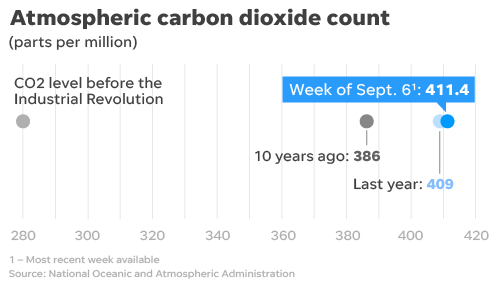
That’s all for now. Don’t forget to follow along on Twitter at @MarkOlalde. You can also reach me at molalde@gannett.com. You can sign up to get Climate Point in your inbox for free here. And, if you’d like to receive a daily round-up of California news (also for free!), you can sign up for USA Today’s In California newsletter here. Mask up! Don't stop now! Cheers.
This article originally appeared on USA TODAY: Climate Point: What will a map of America look like in 2050?


